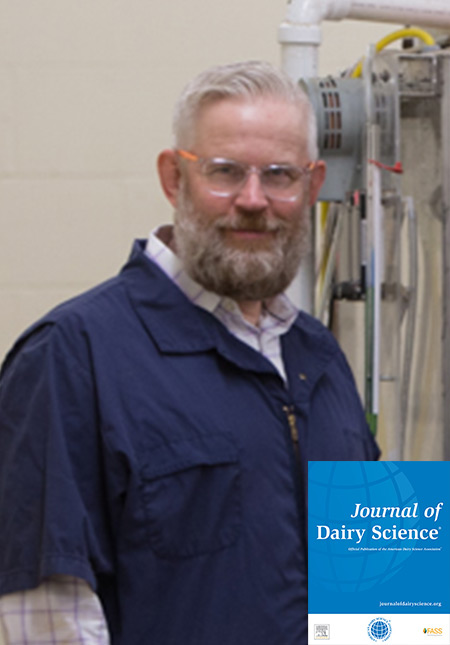
Name: Paul Kononoff
Institution: University of Nebraska–Lincoln
Role with Journal of Dairy Science (JDS): Professor/Extension Dairy Specialist
Can you tell us a bit about your background, and what your current research is focused on?
I grew up in Canada and studied at the University of Saskatchewan and then in 1998 attended Penn State University and eventually earned a PhD in animal science with an emphasis on animal nutrition. Upon completion of my PhD I worked in the dairy industry by serving as a technical support specialist, then as a project director at the University of New Hampshire. Since 2005 I have been employed at the University of Nebraska–Lincoln with an appointment of research and extension. I have several major research areas: forage quality, feed characterization with application to nutrition models, and energy metabolism. I study energetics by using indirect calorimetry and explore manipulations of diet and the effects on whole-animal energy utilization. Although I love all of the dairy breeds, my studies place particular focus on lactating Jersey cattle.
What advice do you have for grad students or other early-career scientists submitting their first manuscripts? What are common oversights you see?
Be well read and show it. Reviewers and readers want to learn how your science fits in the overall knowledge base. A good manuscript should demonstrate that you have read and understand what related research has been published and, most importantly, how your insights advance science. This does not mean you should just include multiple references after every sentence. An oversight I often see is that while authors discuss their findings, they often neglect to include what alternative explanations may have been tested before or potentially exist. Often reviewers then challenge what appears to be a near-sighted discussion. From experience I know that usually this is NOT the case. When a scientist has spent several years dedicated to particular topic they are usually among the world experts. When a manuscript is written, the power of this expertise can be applied by discussing alternative explanations and discussing why they may or may not be worthy of consideration. When authors do this in a concise and eloquent manner, the paper is a joy to read.
Why should authors publish in JDS?
I believe that one of the best reasons authors should publish in JDS is that by doing so, they are active members in JDS’s community of dairy scientists. I am particularly proud to be a part of this community that is made up of authors, editors, readers, and reviewers. These individuals are passionate about dairy science and the community itself composed of both established scientists and “emerging bright lights.” I believe that these people and our journal’s focus on dairy science itself make JDS a special place to publish. With the efforts of our partner Elsevier, the article will be widely distributed, read, and often cited.
What do you think are the biggest challenges currently facing the dairy industry, and how is JDS part of the solution?
Challenges that face the dairy industry include a poor perception of the industry and of the foods which it produces. The good news is that that JDS is a setting in which rich perspectives and novel approaches abound. Our journal continues to publish scientific information on how milk can be produced in a way that ensures both sustainability and proper animal well-being. It also shines a powerful spotlight on the nutritional value of dairy products and the role of these products in feeding the world.